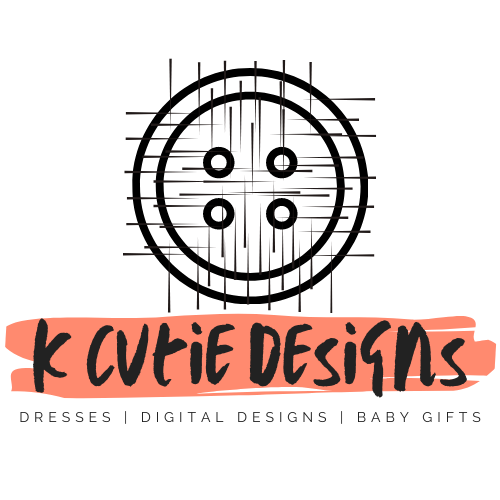Tie-Dye Kitchen Towels may not be the most practical thing out there but isn’t the point of a gift to give you something you wouldn’t give yourself? These turned out to be such a fun and unique Monther’s Day gift and I made a few extras that will be burp cloths at an upcoming baby shower. But, they are a perfect birthday present, happy love gift for a neighbor, or house warming present when they match a new kitchen design.
This post may contain affiliate links where I earn a commission for you clicking on a link in this post. If you purchase anything via my links, I may receive a small commission at no additional cost to you. I actively participate in Amazon Associates Affiliate Program. For more information, visit my Disclosure Statement and Terms & Conditions page.
After we got past our Easter cards project, I started thinking about the next holiday on the radar. It seems with a toddler around that we just jump from one project to the next, but if I can think at least a month ahead, we usually have enough time to pull off my crazy ideas, especially when it involves delivery, creation, and time to get it mailed to the recipient.
I had seen a friend on Facebook make DIY Kitchen Towel Holders from potholders and Pioneer Woman kitchen towels and I thought surely that was something we could do. Then, I got really crazy and thought why not Tie Dye the towels and personalize the potholders, and then all the grandmas would be happy with the sweetest Mother’s Day gifts from the cutest little boy!
I know, right. Genius!

So, we set off on our self quarantine, social distancing, isolation product accumulation.
It turned out for this project that the cheapest place to get the potholders I needed was Dollar Tree. Then, I had the read debacle of kitchen towels. I wanted standard kitchen towels, but because I was going to dye them, I needed white and I didn’t need them too thick since I was sewing and dying them and I didn’t need them too expensive because I was buying a slew of them. It really was all the project dilemmas in one!
Yes, I totally annoyed my husband in the process of trying to decide what to get, but I landed on a few items from Amazon:
- Bar Mop Towels
- Flour Sack Towels | Target was also a great stop to get them
- Tulip Tie Dye Kit
- acrylic craft paint
- T-shirt paint
I did have to wait a bit because I discovered in the process of this that we weren’t the only ones tie-dying things! Apparently, during COVID-19 quarantine activities, tie-dye is up 4000% in searches on Pinterest and Amazon, Target, and Walmart’s online supply of tie-dye kits have been depleted like a roll of toilet paper. I lucked out that this trend has not taken off in my hometown and there were still a few kits in the craft section at my local Supercenter!
While Little Man was all in on our potholder making, the tie-dye process was something I chose to tackle while he was napping. He did wake up while I was finishing and still managed to get his hands all in the project and participate just like he should have. “I paint mama”
I’ve only tie-dyed a couple of times before, so I’m not an expert and for shirts. READ BEGINNER AT the TIE DYE PROCESS. I really like the swirl design, but I tried my hand at a few different folding techniques to see what I liked best. I’ll outline my process below so you can see an idea of the folding and coloring results that follow.
Tie-dying is interesting to me because its a total guess what the design is going to look like when you finish. It really is such a cool process and it turned out to be a fun Mother’s Day surprise that no one expected and when we go visit the special ladies in our life, Little Man will totally recognize our creations in their home, and that was really the point after all!
**Mommy note – this is a great project to discover and explore colors, science and hypothesis methods.
Painted Pot Holder Creations, perfect for Mother’s Day
So, we made two designs on our pot holders using toddler handprints and t-shirt paint to write the words and decorate.
As you paint these, move the orientation of the potholder or material you are painting on to make it comfortable for the child as you paint. In the case of both of these, we turned the potholder upside down. Also, we painted the hand print first, then did decorations on the animals we were making from hand prints, then added words.

Hooked on You potholder design – paint the inside of the right-hand orange. Press on to potholder where the heal of the hand is in the middle and fingers are pointing to the bottom right corner. If painting the left hand of the child, turn the potholder where the fingers point to the bottom left corner. Allow the paint to dry and draw a hook from the top corner, opposite the fish, and add a face and scales to the fish. Write “Hooked on You” in the open space around the fish.
OWL Always Love You potholder design – paint the inside of either hand a dark red, brown, or black. Keep the fingers close together and press the handprint onto the potholder in the center with the fingers pointing down. Allow the paint to dry and draw a wavy stick line coming out of the spot where the fingers meet the palm of the hand. Add green leaves along the twig line and write “OWL always love you” in the t-shirt paint. Try to do something to emphasize the word “OWL” whether you use all caps or different color paint. Make sure to add ears and owl eyes to make a face. An Owl’s eyes are always big with a little dot in the center.
Tie Dye Folding Techniques

Swirl – gather a portion in the middle or off set to the side and twirl it. You can pinch it with a clothes pin or use a fork to start the center swirl. tightly gather the fabric, making sure it folds as you make the round. Hold the circle together with three rubber bands, splitting the project in to pieces like a pie. Make sure they are even and the collar and tail of the shirt are tucked in to make it easier to dye.
Accordion Fold – this is just a simple accordion fold of 2-inch width, back and forth, from one side to the other. Gather rubber bands and hold in similar increments. Closer together or wider apart. You could also fold in half and gather. If the material is long, it does take more time to dye this type of fold.
Angle Fold – complete an accordion fold, back and forth, from one corner to another catch and tuck in the ends as you go.

Star pattern – this one is kinda tricky, but you just fold the project in a triangle and keep folding so the middle becomes a point and you can fold it as tight or wide as you desire. Remember when it comes time to dye the project where the center of the project will be when its unfolded.
Dimples – pull up pieces of the material in opposite directions of each other. Then, pull down the fabric to the center, securing with rubber bands in concentric circles.
Crumple – this design really has no pattern, and that’s kinda the point. Lightly gather the fabric and push together in a circle and hold together with rubber bands like the swirl quadrants.

Concentric circles – looking at the project area, gather a small piece in the middle of the bottom right quadrant and hold with a rubber band. Do the same thing in the top right quadrant. Then pull down toward each other and gather in concentric circles. When this is cut and released it will be a concentric circle design getting bigger and bigger and crossing.
Watermelon – use a fold pattern and dye with the inside of the watermelon, rind, and green. Start with red or dark pink, lighter pink, and peach, then finish ends with green. This pattern could also be done in reverse depending on how the towel will hang. Seeds could be freehanded if black is included in the tie-dye kit. The example in the picture shows the watermelon in an angle accordion fold, but it could be done in the concentric circles or the regular accordion fold.
Square Grid – begin with the same method as the original accordion fold. And, when the project is in one row, accordion fold the length of the fabric top to bottom, into one square. Use four rubber bands to make a grid pattern. The yellow spots in the picture above are where the corners were dyed if that helps design the pattern.
Basic technique for Tie Dyeing fabric
- Wash material before dying. – I think this step is so important for the material to be prepared to accept the dye otherwise, it usually has a film on it that makes it hard for the material to absorb.
- Fold project in the desired pattern. See some of my options above for ideas, or there are a ton more on Pinterest and even the insert that comes with the Tulip tie-dye kit.
- Gather and catch the material with rubber bands. – make rubber bands tight to help hold the fold
- Dye fabric. The bottles in these kits really make it so easy. I covered my tabletop with a dollar store plastic table cloth and used paper towels to wipe down the surface between pieces.
- Place project in a leftover grocery store sack or vegetable bag to let sit.
- Allow the dye to sit for 8+ hours. I like to let it sit 24 hours just to get that deep color and I why not when you have the time!
- Wash out the fabric and remove rubber bands. You can cut them loose or remove them round by round if you are planning to reuse them. Wash and twist fabric until the water runs clear.
- Wash each piece in a washing machine cycle by itself. It’s very easy for the colors to run and all turn brown if you wash multiple pieces together. I just washed each piece on my quick wash cycle without any detergent.
- Machine dry or line dry each item. It took a couple of spins for the towels to dry but I just kept adding them to the dryer with my dryer balls
Tips I learned from DIY Tie Dye for the First Time
- Wash the material/fabric before you begin dying. Many fabric materials have a coating on them and a wash will help remove this fill and allow the fabric to absorb the dye.
- Folding does matter – spend the extra time in the fold to make hard creases and pay attention to your lines, it will make for a better outcome
- Don’t put so much dye around the rubber bands – I thought I had remembered from past experiences that I needed to put a lot of dye at the rubber bands where, but it was the opposite. That is part of what makes the tie-dye happen. I’m one that likes the white spots, but if you want color saturation, then pour the dye into all sections of the fabric.
- Tie-dye on damp fabric. I didn’t do this with my first set and a friend reminded me of this part of the process and it made it so much easier in the second set. It gives the fabric a watercolor effect that is really nice for blended colors. I kept a spray bottle by my wor station, but it also worked to just put the fabric under the water from a faucet and squish out the excess.
- Tie-dye is forgiving – go with it. That’s the point. If it’s not perfect, it’s ok, let the design do the talking!
- Clean your work surface. Depending on how your fabric absorbs the dying liquid there will be drips and run off on your work surface. Wipe it off as you go so you don’t get dark colors on light areas. But, for sure wipe it down between projects so you don’t start out with a pre-dyed design.
- Use gloves when handling the dye (your cuticles will thank you later!).
- Don’t overthink it. Let the colors speak to you. Get creative, and don’t stress about the outcome.
- Enjoy the surprise. I kinda think this is the point of the whole project.

I’m just a beginner, I’m sure it could be way more professional, but I’m kinda a tie dye junkie now. I want to dye all the things!!!
Supplies that made the project successful








